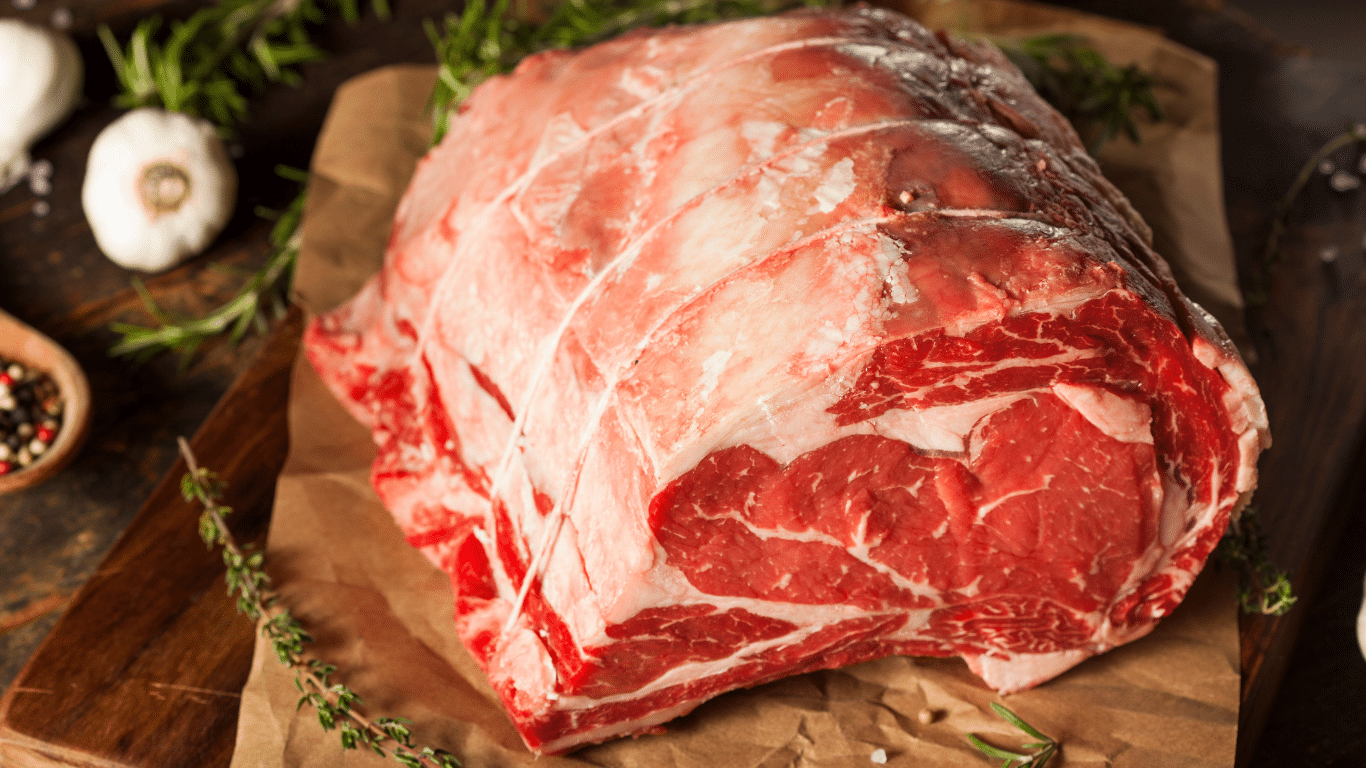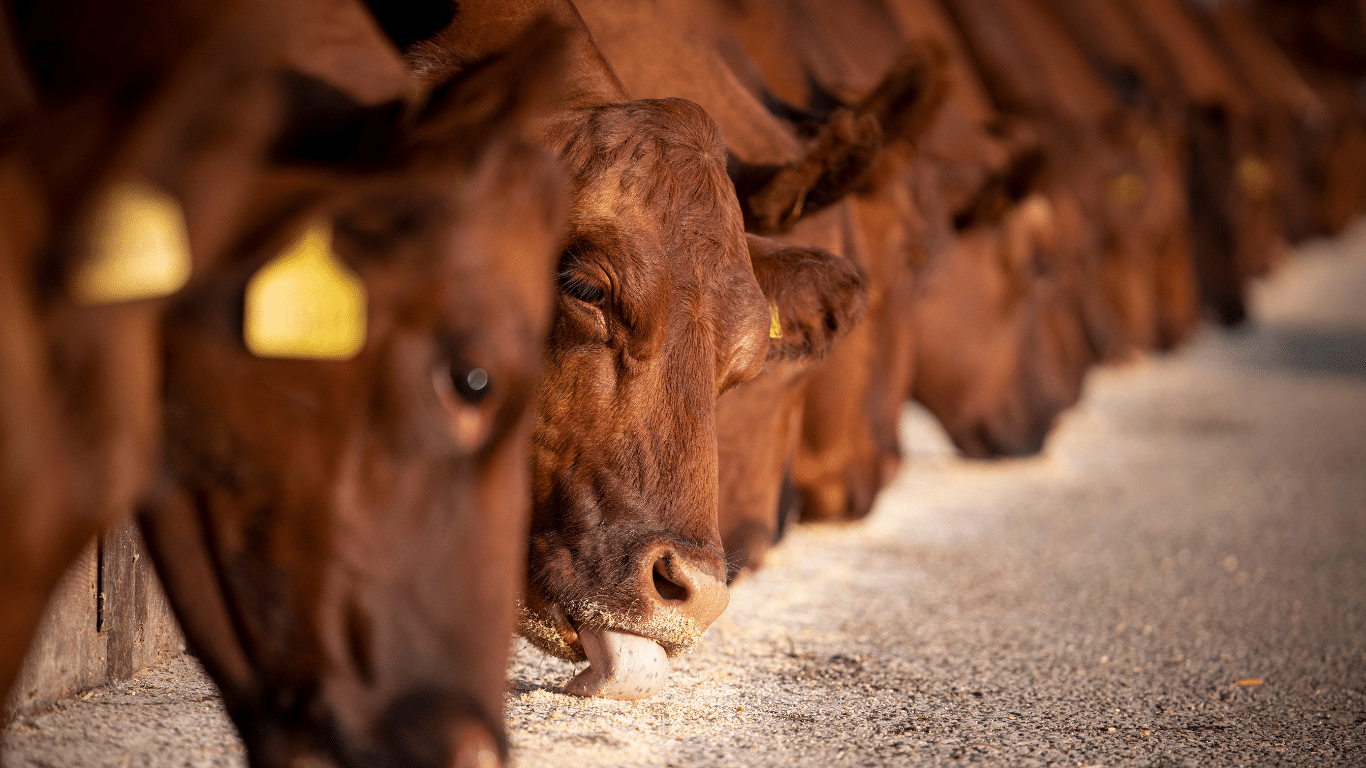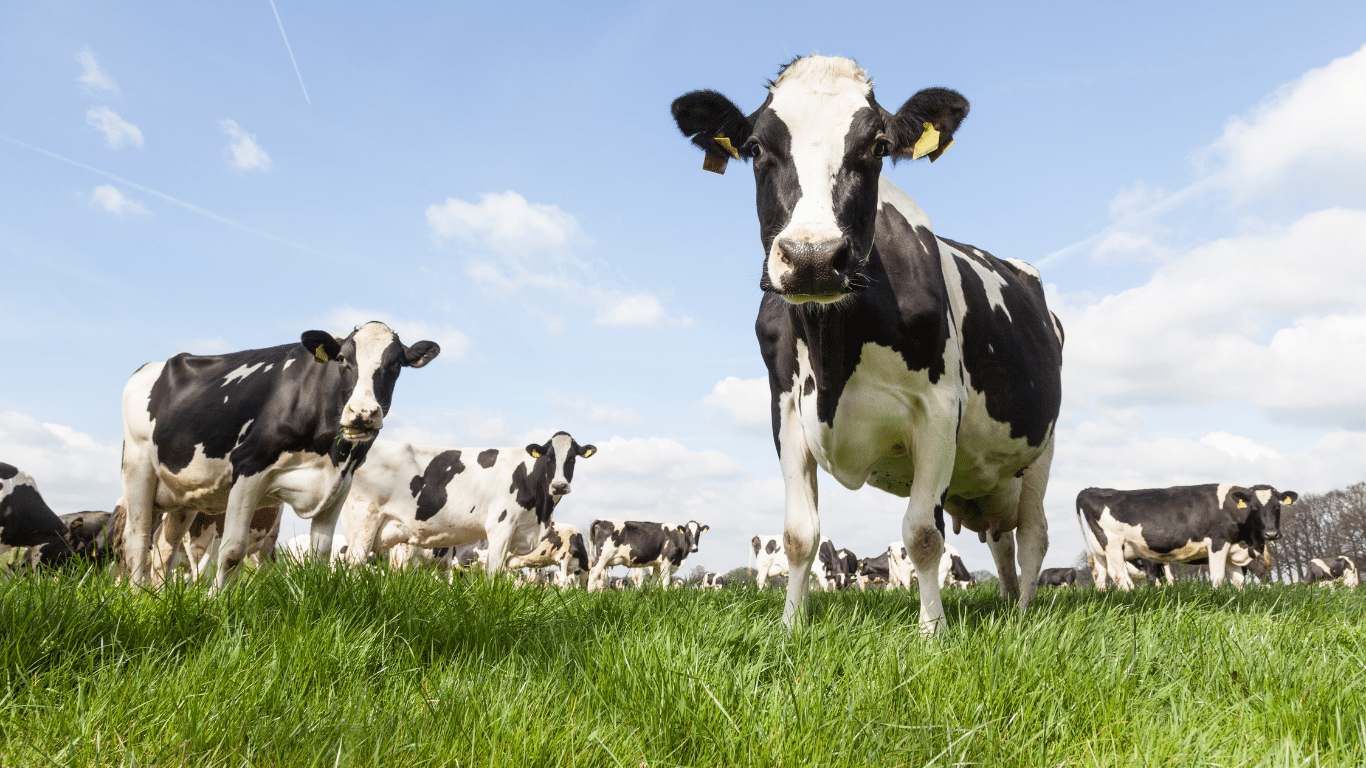When it comes to beef, the debate between grass-fed and grain-fed is a hot topic. Many people are curious about how these different feeding practises affect the taste, nutrition, and even the environmental impact of the meat we consume. In this article, we’ll break down the differences between grass-fed beef and grain-fed beef, helping you make an informed choice about what’s best for your plate and your health.
Key Takeaways
- Grass-fed beef comes from cattle that graze on grass pastures, while grain-fed beef is often finished on grains for rapid growth.
- Nutritionally, grass-fed beef tends to have higher omega-3 fatty acids, vitamins, and antioxidants compared to grain-fed beef.
- The taste and texture of grass-fed beef can be leaner and more robust, whereas grain-fed beef is often more tender and buttery due to higher fat content.
- Grass-fed beef is generally considered more sustainable, with a lower carbon footprint compared to grain-fed beef production.
- Consumer preferences are shifting towards grass-fed options, though price differences can be a factor in purchasing decisions.
Understanding The Basics Of Beef Production
Let’s get down to brass tacks and look at what actually differentiates grass-fed and grain-fed beef. It’s more than just what the cows eat; it’s about their whole lifestyle and how that impacts the final product. Understanding these basics is essential for making informed choices at the butcher or supermarket.
What Is Grass-Fed Beef?
Grass-fed beef comes from cattle that have primarily grazed on grass and other forages throughout their lives. This doesn’t necessarily mean they’ve spent their entire lives roaming lush pastures, though that’s often the ideal. The term
Nutritional Differences Between Beef Types
Fat Content Comparison
Okay, let’s get into the nitty-gritty of beef nutrition. When you’re standing at the butcher, trying to decide between grass-fed and grain-fed, one of the first things you might wonder about is the fat content. Generally, grass-fed beef tends to be leaner than grain-fed. This means you’re getting fewer calories per serve. But it’s not just about quantity; it’s about quality too.
The type of fat in your beef matters. Grass-fed beef often has a better ratio of omega-3 to omega-6 fatty acids, which is something to consider for overall health.
Vitamins And Minerals
Both grass-fed and grain-fed beef are packed with vitamins and minerals. We’re talking B12, B3, B6, iron, selenium, and zinc – all essential for a healthy body. But here’s a little secret: grass-fed beef often has a slight edge when it comes to certain vitamins. It can be higher in Vitamin A (from carotenoids) and Vitamin E, both important antioxidants. So, while both types are nutritious, grass-fed might give you a little extra boost.
Omega-3 Fatty Acids
This is where grass-fed beef really shines. Grass-fed beef can contain up to five times more omega-3 fatty acids than grain-fed beef. Omega-3s are great for heart health, brain function, and reducing inflammation. While both types of beef contain omega-6 fatty acids, it’s the higher omega-3 content in grass-fed that makes it stand out. If you’re looking to boost your omega-3 intake, choosing grass-fed hormone-free beef comparison is a smart move. For those in Perth wondering where to buy premium beef in Perth, consider checking out local butchers or farmers markets that specialise in grass-fed options. It’s worth the effort for the added health benefits.
Here’s a quick comparison:
| Nutrient | Grass-Fed Beef | Grain-Fed Beef |
| Omega-3 Fatty Acids | Higher | Lower |
| Vitamin E | Higher | Lower |
| Total Fat | Lower | Higher |
Taste And Texture: A Culinary Perspective

When it comes to beef, the differences in flavour and texture between grass-fed and grain-fed varieties are significant and can greatly influence your dining experience. It’s not just about sustenance; it’s about savouring the nuances that each type brings to the table. What are the key differences in taste and texture between grass-fed and grain-fed beef? How do these differences affect cooking methods and the final dish?
Flavour Profiles
Grass-fed beef often boasts a more complex, earthy flavour profile. Some describe it as having a slightly gamey taste, reflecting the diverse diet of grasses and forages the cattle consume. This can be a delightful experience for those who appreciate a more robust and natural flavour. Grain-fed beef, on the other hand, tends to have a milder, sweeter flavour due to the high-energy grain diet. This results in a more consistent and predictable taste, which many consumers find appealing. The flavour is also influenced by the marbling, which is generally more abundant in grain-fed beef.
Texture Differences
Grass-fed beef typically has a leaner profile, resulting in a firmer texture. This means it can sometimes be chewier than grain-fed beef if not cooked properly. The lower fat content also means it can dry out more easily during cooking. Grain-fed beef, with its higher fat content and marbling, generally has a more tender and juicy texture. The fat melts during cooking, basting the meat from the inside and creating a more succulent result. This is why grain-fed cuts are often preferred for quick-cooking methods like grilling and pan-searing.
Cooking Considerations
Understanding the premium selection of charcuterie differences in texture is key to cooking each type of beef to perfection. Grass-fed beef benefits from slower cooking methods at lower temperatures. Braising, slow-cooking, or sous vide techniques can help break down the muscle fibres and tenderise the meat, while retaining moisture. Marinades can also be used to add moisture and flavour. Grain-fed beef is more forgiving and can be cooked using a wider range of methods. However, it’s still important to avoid overcooking, as even grain-fed beef can become dry if cooked for too long. Using a meat thermometer is always a good idea to ensure the beef is cooked to the desired level of doneness.
Ultimately, the choice between grass-fed and grain-fed beef comes down to personal preference. Some people prefer the bolder flavour and leaner texture of grass-fed beef, while others prefer the milder flavour and more tender texture of grain-fed beef. Experimenting with both types and different cooking methods is the best way to discover your own preferences.
Here’s a simple comparison table:
| Feature | Grass-Fed Beef | Grain-Fed Beef |
| Flavour | Earthy, complex, slightly gamey | Milder, sweeter, more consistent |
| Texture | Firmer, leaner, can be chewier | Tender, juicy, more marbling |
| Cooking | Slower methods, lower temperatures | More versatile, but avoid overcooking |
| Fat Content | Lower | Higher |
Environmental Impact Of Beef Production

Sustainability Of Grass-Fed Practises
Grass-fed beef production is often touted as a more sustainable option, but what does that really mean? It boils down to how the land is managed. Sustainable grass-fed operations focus on maintaining healthy pastures, which can actually improve soil health through carbon sequestration. This is where grasses absorb carbon dioxide from the atmosphere and store it in the soil.
- Rotational grazing is key: moving cattle regularly prevents overgrazing.
- Healthy soil retains more water, reducing runoff and erosion.
- Diverse pastures support a wider range of plant and animal life.
However, it’s not a perfect system. Grass-fed cattle typically take longer to reach market weight, which can increase their overall methane production. It’s a complex balance, and ethical farming and beef sourcing groceries play a big role.
Carbon Footprint Analysis
When we talk about the carbon footprint of beef, we’re looking at the total greenhouse gas emissions associated with raising cattle, from farm to plate. This includes methane (a potent greenhouse gas produced by cattle), nitrous oxide from fertilisers, and carbon dioxide from transportation and processing. Grain-fed beef often has a higher carbon footprint due to the energy-intensive process of growing and transporting feed. However, grass-fed beef’s longer lifespan can offset some of these gains.
It’s important to consider the entire lifecycle when assessing the environmental impact. Are the cattle transported long distances? What kind of energy is used in the processing plant? These factors all contribute to the overall carbon footprint.
Land Use Considerations
Land use is a significant factor in the environmental impact of beef production. Grain-fed systems often rely on converting land to grow feed crops, which can lead to deforestation and habitat loss. Grass-fed systems, on the other hand, can utilise land that is unsuitable for crop production, such as native grasslands. However, the intensity of grazing and the overall stocking rate are crucial. Overgrazing can degrade grasslands, leading to soil erosion and reduced biodiversity.
Here are some key considerations:
- Preventing overgrazing is essential for maintaining healthy ecosystems.
- Restoring degraded lands can improve carbon sequestration and biodiversity.
- Integrating livestock with other farming practises can enhance sustainability.
Health Benefits Of Grass-Fed Vs Grain-Fed Beef
Heart Health Implications
When it comes to heart health, the type of beef you choose might make a difference. Grass-fed beef often boasts a healthier fat profile compared to grain-fed. This is largely due to the different diets of the cattle. But is grass-fed beef healthier?
- Lower in Total Fat: Grass-fed beef tends to have less overall fat, which can contribute to a lower calorie intake.
- Better Omega-6 to Omega-3 Ratio: A more balanced ratio is generally considered beneficial for heart health.
- Potentially Lower Cholesterol: Some studies suggest grass-fed beef may have a slightly positive impact on cholesterol levels.
Choosing grass-fed beef as part of a balanced diet could be a simple step towards supporting cardiovascular well-being. It’s not a magic bullet, but every little bit counts.
Antioxidant Levels
Antioxidants are important for protecting our cells from damage, and grass-fed beef vs grain-fed can differ in their antioxidant content. Grass-fed cattle, munching on a variety of plants, tend to produce beef richer in certain antioxidants.
- Vitamin E: Grass-fed beef often contains higher levels of Vitamin E, an antioxidant that helps protect cell membranes.
- Beta-Carotene: This precursor to Vitamin A is found in greater amounts in grass-fed beef.
- Other Antioxidants: Grass-fed beef may also contain a wider range of other beneficial antioxidants.
Impact On Inflammation
Inflammation plays a role in many chronic diseases, and diet can influence inflammation levels in the body. Grass-fed beef contains nutrients that may help manage inflammation. The way cows are fed can influence the nutrition composition of the beef.
- Conjugated Linoleic Acid (CLA): Grass-fed beef typically has higher levels of CLA, a fatty acid associated with anti-inflammatory effects.
- Omega-3 Fatty Acids: The increased omega-3 content in grass-fed beef can also contribute to reducing inflammation.
- Overall Nutrient Profile: The combination of vitamins, minerals, and healthy fats in grass-fed beef may offer a more balanced approach to managing inflammation compared to grain-fed options.
Consider incorporating quality assurance standards into your diet for a balanced approach to health.
Consumer Preferences And Market Trends
Shifting Consumer Demands
Okay, so what’s everyone actually wanting when it comes to beef these days? Well, it’s not just about the cheapest cut anymore. People are thinking more about where their food comes from, how it’s raised, and what impact it has. There’s a growing interest in sustainable and ethical food choices, and that definitely includes beef. Consumers are asking questions like: Was the animal treated well? What did it eat? Is this better for the environment? This is driving demand for things like grass-fed beef and other specialty options. It’s not just a trend; it’s a real shift in how people are approaching their food.
Price Differences
Alright, let’s talk dollars and cents. You’ve probably noticed that grass-fed beef often comes with a higher price tag than your standard grain-fed stuff. Why is that? Well, it’s mainly down to the way the cattle are raised. Grass-fed operations typically require more land and a longer time to bring the animals to market weight. Plus, there can be added costs associated with certifications and ensuring the beef meets specific standards. So, while you might pay more upfront, some people see it as an investment in their health and the environment. Is it worth it? That’s a question everyone has to answer for themselves, weighing up their budget and their priorities.
Quality Assurance Standards
How do you know you’re actually getting what you pay for? That’s where quality assurance standards come in. There are different certifications and labels out there that can help you identify beef that meets certain criteria, whether it’s grass-fed, organic, or something else. Look for labels from reputable organisations that verify the claims made by producers. These standards help ensure that the beef you’re buying is what it says it is, giving you peace of mind and supporting farmers who are doing things the right way. It’s all about transparency and accountability in the beef industry.
Choosing between grass-fed and grain-fed beef often comes down to individual priorities. Some consumers prioritise health benefits and environmental impact, while others focus on price and availability. Understanding these factors helps consumers make informed decisions that align with their values and needs.
The Herdsman’s Commitment To Quality
At The Herdsman, we believe that quality beef starts long before it reaches your plate. It’s about ethical farming, sustainable practises, and a dedication to providing you with the best possible product. We’re not just selling beef; we’re offering a connection to the land and the farmers who work it.
Supplier Standards
We partner with local Australian farmers who share our commitment to quality and animal welfare. What does that actually mean? It means we look for farmers who:
- Prioritise the health and well-being of their cattle, ensuring they have access to open pastures and a natural diet.
- Employ sustainable farming methods that protect the environment and promote biodiversity.
- Adhere to strict quality control measures throughout the production process.
We regularly visit our suppliers, conducting audits and building strong relationships based on trust and transparency. We want to know exactly where our beef comes from and how it’s raised.
Traceability Of Beef
Ever wondered where your beef actually comes from? We’ve got you covered. We believe in complete transparency, so you can trace your beef back to the farm it originated from. Our traceability system allows you to see the journey your beef has taken, from paddock to plate. This includes information on:
- The farm of origin
- The breed of cattle
- The feeding practises used
- Processing and handling information
This level of detail gives you peace of mind, knowing that you’re consuming beef that has been raised to the highest standards. It also helps us maintain accountability and ensure that our suppliers are meeting our strict requirements.
Supporting Local Farmers
We’re passionate about supporting local Australian farmers and rural communities. By choosing The Herdsman, you’re not just buying beef; you’re investing in the future of Australian agriculture. We believe that local farmers are the backbone of our industry, and we’re committed to helping them thrive. This includes:
- Paying fair prices for their produce
- Providing access to markets and distribution channels
- Promoting their stories and their commitment to quality
We see our relationship with our farmers as a partnership. We work together to ensure that they can continue to produce high-quality beef in a sustainable and ethical way. It’s about building a resilient and thriving local food system for the benefit of everyone.
We also encourage practises that improve the quality of the meat, such as growth rate, days to finish, and carcase weight. We also look at milk production, milk composition, and milk yield consistency.
At The Herdsman, we take pride in our promise to deliver only the best quality products. Our commitment to freshness and excellence means you can trust us for all your grocery needs. Explore our wide range of fresh produce and gourmet items today! Visit our website to learn more and shop now!
Final Thoughts on Grass-Fed vs. Grain-Fed Beef
In the end, choosing between grass-fed and grain-fed beef really comes down to what matters most to you. If you’re after a leaner cut with a unique flavour and potential health benefits, grass-fed might be the way to go. On the flip side, if you prefer a juicier, more marbled steak, grain-fed could be your pick. Both types have their pros and cons, and it’s worth considering factors like taste, nutrition, and even environmental impact. At The Herdsman, we pride ourselves on offering a range of quality beef from trusted suppliers, so you can make an informed choice that suits your needs. Whatever you decide, just remember to enjoy your beef knowing where it comes from!
Frequently Asked Questions
What does grass-fed beef mean?
Grass-fed beef comes from cows that eat grass for their whole lives. They are not given grains or other supplements to make them gain weight quickly.
What is grain-fed beef?
Grain-fed beef is from cows that start on grass but are later moved to feedlots where they eat a mix of grains, like corn and soy, to gain weight faster.
How do grass-fed and grain-fed beef differ in taste?
Grass-fed beef often has a stronger, more natural flavour, while grain-fed beef tends to be richer and juicier because of the extra fat.
Is there a nutritional difference between the two types of beef?
Yes! Grass-fed beef usually has more omega-3 fatty acids and vitamins, while grain-fed beef has more fat overall.
Which type of beef is better for the environment?
Grass-fed beef is generally considered better for the environment because it can be raised on pasture without the need for grain production.
What should I consider when choosing between grass-fed and grain-fed beef?
Think about your taste preference, health benefits, and how the beef was raised. It also helps to look for quality labels and support local farmers.






